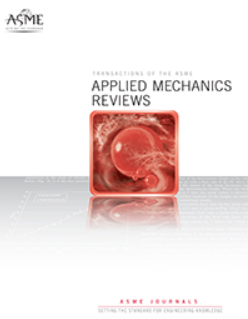大规模动力系统的Krylov方法:在流体动力学中的应用
IF 16.1
1区 工程技术
Q1 MECHANICS
引用次数: 0
摘要
预测和描述从不稳定开始到向湍流过渡的分岔的能力在学术和工业应用中都至关重要。动力系统理论中的许多工具可用于此目的。在这篇综述中,我们着重于稳定和时间周期解的实际计算和稳定性分析,特别强调了非常高维系统,如离散Navier-Stokes方程。除了一个简明的理论框架外,我们还介绍了nekStab,这是一个开源的、用户友好的工具箱,专门用于使用谱元求解器Nek5000进行此类分析。依靠Krylov方法和时间步进公式,nekStab继承了Nek5000的灵活性和高性能,可用于研究复杂三维几何形状中流动的稳定性。根据文献中的标准基准,介绍了nekStab的性能和精度。为了教学和清晰起见,在nekStab中实现的大多数算法都是使用Python伪代码呈现的。由于其灵活性和领域不可知的性质,本工作中提出的方法可以应用于为其他求解器开发类似的工具箱,最重要的是在流体动力学领域之外。本文章由计算机程序翻译,如有差异,请以英文原文为准。
Krylov Methods for Large-Scale Dynamical Systems: Application in Fluid Dynamics
The ability to predict and characterize bifurcations from the onset of unsteadiness to the transition to turbulence is of critical importance in both academic and industrial applications. Numerous tools from dynamical system theory can be employed for that purpose. In this review, we focus on the practical computation and stability analyses of steady and time-periodic solutions with a particular emphasis on very high-dimensional systems such as those resulting from the discrete Navier-Stokes equations. In addition to a didactically concise theoretical framework, we introduce nekStab, an open source and user-friendly toolbox dedicated to such analyses using the spectral element solver Nek5000. Relying on Krylov methods and a time-stepper formulation, nekStab inherits the flexibility and high performance capabilities of Nek5000 and can be used to study the stability properties of flows in complex three-dimensional geometries. The performances and accuracy of nekStab are presented on the basis of standard benchmarks from the literature. For the sake of pedagogy and clarity, most of the algorithms implemented in nekStab are presented herein using Python pseudocode. Because of its flexibility and domain-agnostic nature, the methodology presented in this work can be applied to develop similar toolboxes for other solvers, most importantly outside the field of fluid dynamics.
求助全文
通过发布文献求助,成功后即可免费获取论文全文。
去求助
来源期刊
CiteScore
28.20
自引率
0.70%
发文量
13
审稿时长
>12 weeks
期刊介绍:
Applied Mechanics Reviews (AMR) is an international review journal that serves as a premier venue for dissemination of material across all subdisciplines of applied mechanics and engineering science, including fluid and solid mechanics, heat transfer, dynamics and vibration, and applications.AMR provides an archival repository for state-of-the-art and retrospective survey articles and reviews of research areas and curricular developments. The journal invites commentary on research and education policy in different countries. The journal also invites original tutorial and educational material in applied mechanics targeting non-specialist audiences, including undergraduate and K-12 students.

 求助内容:
求助内容: 应助结果提醒方式:
应助结果提醒方式:


